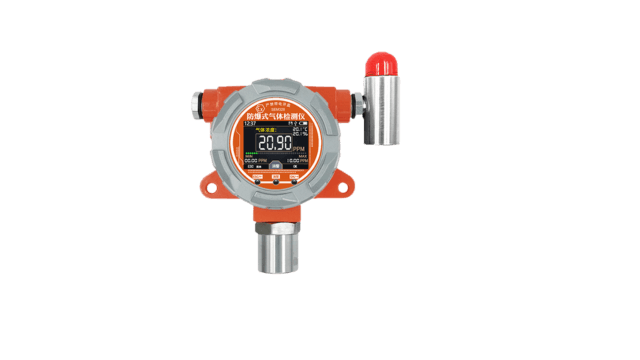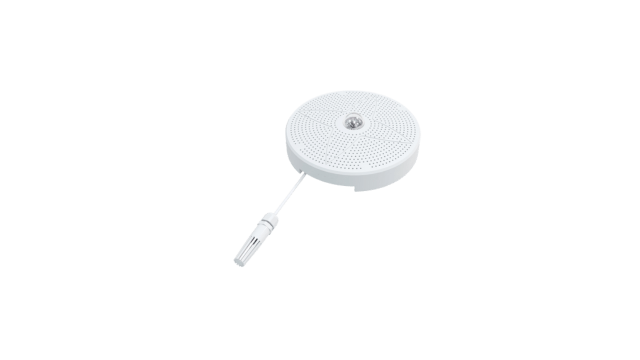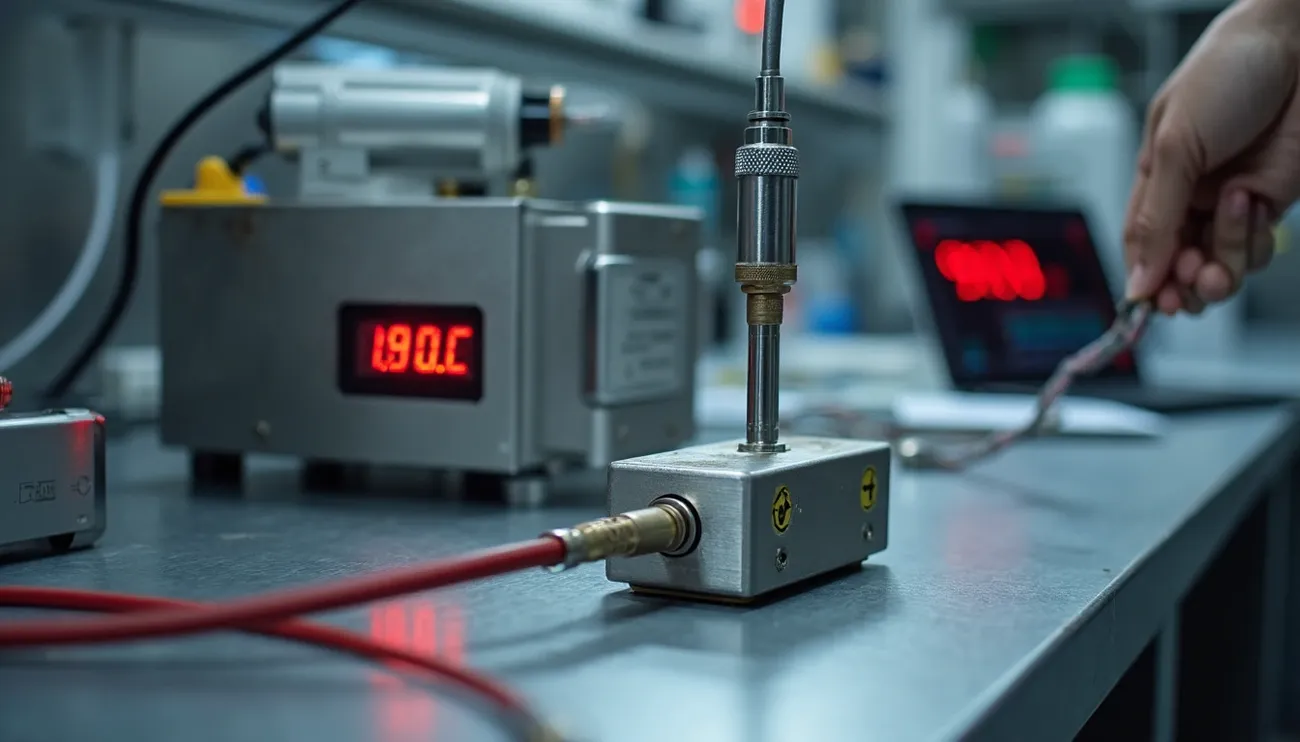 Most people don’t realize they spend about 90% of their time indoors, where TVOC air quality poses surprising health risks. EPA studies have found that many volatile organic compounds exist up to ten times higher indoors compared to outdoor air. Recent measurements show common organic pollutants reach levels 2 to 5 times higher inside homes than outside.
Most people don’t realize they spend about 90% of their time indoors, where TVOC air quality poses surprising health risks. EPA studies have found that many volatile organic compounds exist up to ten times higher indoors compared to outdoor air. Recent measurements show common organic pollutants reach levels 2 to 5 times higher inside homes than outside.
TVOCs (Total Volatile Organic Compounds) represent chemicals that easily turn to vapor at room temperature. These harmful compounds enter our homes through everyday items like paints, varnishes, cleaning supplies, and construction materials. Long-term TVOC exposure can lead to systemic problems – from chronic nausea and dizziness to serious damage affecting the liver, kidneys, and nervous system. Common household items harbor particularly dangerous compounds like formaldehyde and benzene. These toxins lurk in everything from adhesives and paints to cigarettes and cleaning products.
This piece will help you understand TVOCs better – their sources, safe exposure thresholds, and effective monitoring methods. You’ll learn practical ways to reduce these potentially harmful compounds and create a healthier space inside your home.
What is TVOC and why it matters
Healthy indoor environments depend on understanding TVOCs. Indoor spaces can trap harmful compounds, unlike outdoor air that naturally disperses pollutants. This makes TVOC air quality monitoring crucial, especially in enclosed spaces.
TVOC meaning and definition
TVOC stands for Total Volatile Organic Compounds. These organic chemicals turn into gasses at room temperature. TVOC shows the combined concentration of multiple airborne VOCs that exist together in your indoor environment, rather than individual compounds.
Some common examples of VOCs include:
Benzene
Formaldehyde
Toluene
Ethylene glycol
Methylene chlorol
Tetrachloroethylene
TVOC vs VOC: what’s the difference?
VOC refers to single volatile organic compounds, while TVOC represents the total of all VOCs in a specific volume of air. TVOC gives you a general picture of VOC pollution by combining all measurements instead of measuring each compound on its own.
Here’s a simple way to see it: VOCs are like individual flowers, and TVOC is the whole bouquet. This combined approach makes more sense since thousands of VOCs exist, and testing each one would cost too much and be too complicated.
What does TVOC mean in air quality?
TVOC works as a key indicator of possible indoor air pollution in air quality tests. You’ll find TVOC measured in micrograms per cubic meter (μg/m³), milligrams per cubic meter (mg/m³), parts per million (ppm), or parts per billion (ppb).
TVOC levels below 0.3 mg/m³ show good air quality, and levels between 0.3 mg/m³ and 0.5 mg/m³ are acceptable. Experts suggest keeping indoor TVOC levels under 300 μg/m³ to maintain healthy air.
TVOC’s importance comes from its practical use in air quality monitoring. Monitoring thousands of individual VOCs continuously isn’t realistic. TVOC has become the go-to measurement for checking overall VOC levels in indoor spaces.
TVOC monitoring helps you see invisible air pollutants clearly. This allows you to create better ventilation and purification strategies that improve your indoor air quality effectively.
Where do TVOCs come from?
TVOCs exist everywhere in our modern environments. Indoor levels are 2 to 5 times higher than outdoor concentrations. These invisible air pollutants come from many sources around us each day.
Building materials and furnishings
Building materials serve as constant TVOC sources and make up to 90% of total indoor VOC levels. New or renovated buildings have higher TVOC concentrations because fresh materials release gasses actively. Painted surfaces, adhesives, plywood, particle board, carpets, and synthetic fabrics release these chemicals. The materials keep releasing chemicals through surface migration, secondary emissions after absorption, and ongoing chemical reactions.
Household and personal care products
Many everyday products release TVOCs while you use or store them. Air fresheners, cleaning supplies, disinfectants, cosmetics, perfumes, and aerosol sprays raise your indoor TVOC levels. Scented candles, art supplies, and dry-cleaned clothing can release high levels of VOCs. Perchloroethylene stays at high levels on fabric’s surface weeks after cleaning.
Office equipment and electronics
Office equipment acts as a hidden TVOC source. Printers, copiers, computers, and other electronics release VOCs, especially as they heat up during use. Research shows that desktop computers with CRT monitors release higher VOC levels than those with TFT displays. User exposure increases because people stay close to these sources for long periods.
Indoor smoking and combustion sources
Tobacco smoke has over 7,000 chemicals that include many VOCs. The smoke’s residue sticks to fabrics and continues to affect air quality even after it clears. Gas stoves, burning wood, cooking activities, and vehicle exhaust add to these sources.
Mold and microbial VOCs
Humid environments (75% relative humidity or higher) can cause microbial growth that produces microbial VOCs (MVOCs). Most MVOCs show weak links to mold status. However, compounds like 2-methyl-1-butanol and 1-octen-3-ol showed clear statistical correlation. Mold can keep growing and releasing MVOCs even after humidity drops.
Health effects and safe TVOC levels
TVOCs can harm your health in many ways. The effects range from mild irritation to serious long-term health problems. You need to understand these risks and know safe exposure levels to protect your indoor air quality.
Short-term symptoms of exposure
Your body shows several noticeable symptoms soon after contact with TVOCs. People commonly experience:
Eye, nose, and throat irritation
Headaches and dizziness
Nausea and vomiting
Visual disorders and memory impairment
Coordination loss and fatigue
Allergic skin reactions
These warning signs of poor indoor air quality usually go away once exposure stops.
Long-term health risks
Long exposure to TVOCs poses much bigger health risks. High-level exposure over time can cause:
Central nervous system impairment
Respiratory diseases and worse asthma symptoms
Cancer in animals and possibly humans
Some VOCs like formaldehyde can cause cancer, particularly nasopharyngeal cancer. Chemicals like toluene might lead to neurological problems, and in severe cases, even dementia.
TVOC levels and safety thresholds
Air quality experts say TVOC concentrations below 0.5 mg/m³ are safe. Here’s a quick guide:
Less than 0.3 mg/m³: Low concern
0.3 to 0.5 mg/m³: Acceptable
0.5 to 1 mg/m³: Marginal
1 to 3 mg/m³: High concern
European indoor air quality guidelines suggest even lower limits – under 0.25 mg/m³.
What is HCHO and TVOC in air quality?
HCHO (formaldehyde) stands out as one of the most dangerous components in TVOCs. This colorless gas lurks in building materials and household products.
Formaldehyde can be toxic even at tiny levels measured in parts-per-million. Extended HCHO exposure damages mucous membranes, irritates breathing passages, and may cause cancer. That’s why government safety limits for formaldehyde are tighter than general TVOC limits – 0.08 mg/m³ in homes and 0.10 mg/m³ in construction/industrial settings.
Air quality monitors track HCHO separately from other TVOCs because of its serious health effects and how common it is indoors.
How to monitor and reduce TVOC indoors
Clean indoor air depends on good monitoring and practical ways to reduce pollutants. You can manage TVOCs in your home with the right steps.
Using a TVOC air quality monitor
Quality air monitors help track TVOCs and let you know when levels get too high. Stay away from cheap monitors that use heated metal oxide semiconductor sensors – they don’t give reliable readings. Remember that professional photoionization equipment costs over $6,000, unlike consumer models.
Sentec offers advanced TVOC (Total Volatile Organic Compounds) measurement solutions tailored for both industrial and indoor air quality monitoring applications. Our TVOC sensors are designed to provide accurate, real-time data on the concentration of volatile organic compounds, helping industries and building managers maintain safe and healthy environments.

SEM328-EX Gas Sensor is an explosion-proof gas sensor engineered for demanding industrial applications. It is ideal for hazardous environments such as chemical plants, refineries, and storage facilities where VOC levels must be closely monitored to prevent safety hazards.

SEM230 Multifunctional Air Quality Gas Sensor is designed for indoor air quality monitoring in offices, schools, hospitals, and residential buildings. It measures not only TVOC but also temperature, humidity, and CO₂, making it a comprehensive indoor air quality solution.
Improving ventilation and airflow
Good airflow serves as your best defense against TVOCs. Research shows proper ventilation can cut indoor VOC levels by up to 90%. Here’s how to get better air quality:
Let fresh air in daily, especially while cleaning or painting
Run exhaust fans in bathrooms and kitchens
Keep humidity at 40-60% with dehumidifiers
Large spaces might need energy recovery ventilators
Fresh air should flow before, during, and after any activities that release VOCs.
Choosing low-VOC or VOC-free products
Smart product choices help prevent TVOC buildup. Look for these certifications:
GOTS or Oeko-Tex certified natural fabrics
GOLS certified natural latex cushions
Water-based paints and adhesives
FSC-certified wood items
Natural cleaners like vinegar and baking soda work well too
Proper storage and disposal of chemicals
Chemical storage makes a big difference in your air quality:
Keep partially used products in sealed containers
Store VOC-emitting items in your garage or shed
Paint and solvent containers should stay outside
Buy only what you need for seasonal products like paint strippers
Take unwanted chemicals to hazardous waste collection sites
When to consider professional testing
You might need expert testing:
Right after big renovation projects
If health issues don’t go away
During regular checks every 1-2 years
Professional methods like gas chromatography show exactly which VOCs are present and their levels. DIY test kits don’t give much detail. Experts often use handheld devices to check large areas first, then take samples to labs for deeper analysis.
Conclusion
TVOC air quality plays a vital role in creating healthier indoor environments. This piece explores how these invisible compounds substantially affect our wellbeing. The stakes are high since we spend about 90% of our time indoors.
Our daily environment contains TVOCs that come from building materials, household products, electronics, and microbial growth. These compounds’ health effects range from minor irritations to serious conditions that affect vital organs. Air quality monitoring helps identify problems early, which protects your health.
You don’t need drastic lifestyle changes to lower TVOC exposure. Your indoor air quality improves dramatically with proper ventilation, smart product choices, and safe chemical storage. Quality monitoring equipment gives you valuable data that guides your protection efforts.
Most households can maintain safe TVOC levels below 0.3 mg/m³ by following these strategies consistently. These compounds may be invisible, but they need active management. The air you breathe every day shapes your health and wellbeing, which makes TVOC monitoring a key part of home maintenance.
FAQs
Q1. What are TVOCs and why should I be concerned about them? TVOCs (Total Volatile Organic Compounds) are chemicals that easily evaporate at room temperature. They’re important to monitor because indoor TVOC levels can be up to ten times higher than outdoor levels, potentially causing health issues ranging from headaches to long-term organ damage.
Q2. What are common sources of TVOCs in homes? Common TVOC sources include building materials (like paint and plywood), household products (such as cleaning supplies and air fresheners), office equipment, indoor smoking, and even mold growth. New or recently renovated buildings often have higher TVOC levels due to off-gassing from fresh materials.
Q3. How can I monitor TVOC levels in my home? You can use a TVOC air quality monitor to track levels in your home. Look for reliable devices with quality sensors that can detect both formaldehyde and VOCs. Some smart monitors can even trigger ventilation systems automatically when poor air quality is detected.
Q4. What are considered safe TVOC levels for indoor environments? Generally, TVOC levels below 0.3 mg/m³ are considered low concern, while levels between 0.3 mg/m³ and 0.5 mg/m³ are deemed acceptable. It’s recommended to keep indoor TVOC levels below 300 μg/m³ to maintain healthy air quality.
Q5. How can I reduce TVOC levels in my home? To reduce TVOC levels, improve ventilation by opening windows daily and using exhaust fans, choose low-VOC or VOC-free products, properly store and dispose of chemicals, and maintain proper humidity levels. Consider professional testing after major renovations or if unexplained health symptoms persist.



